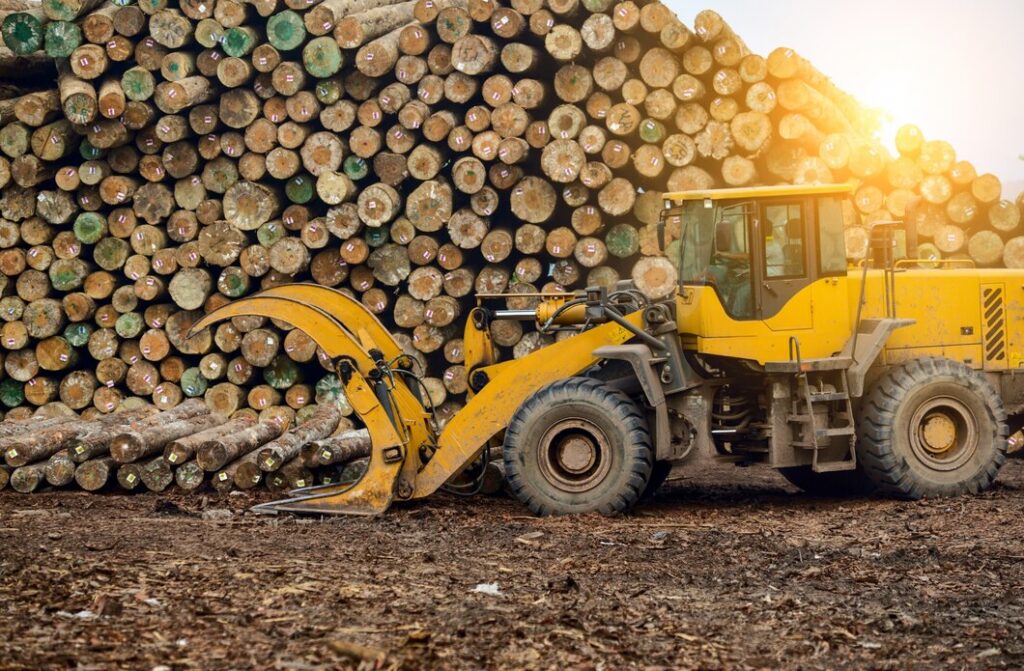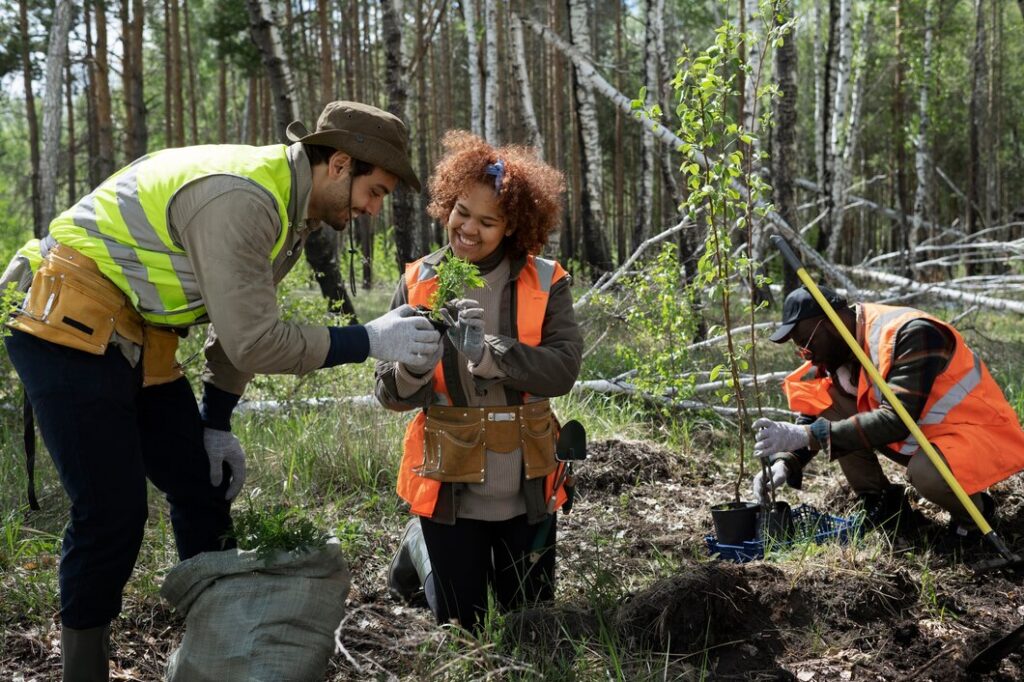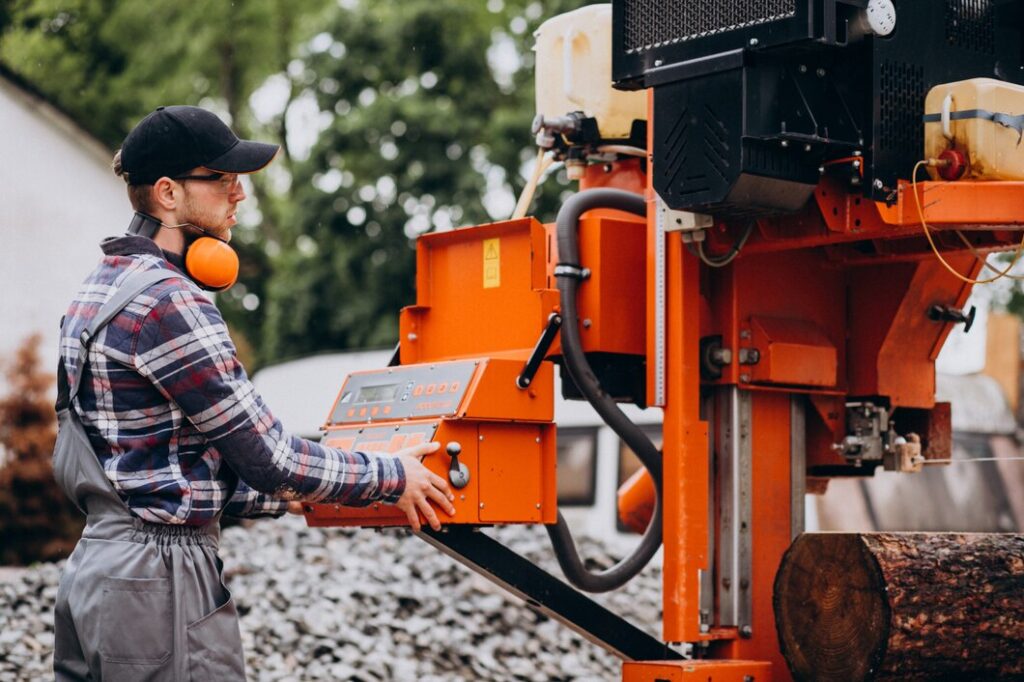-Tires size: 23.1.26 (comes with chains) -No winch -Everything works and operates as it should. Nothing wrong with it and ready to go to work -If interested (for $3K extra), owner will include with sale another entire CAT 518 Tree Harvester with 5000hrs on the drivetrain, which is the only reason why owner bought the […]
Forestry Equipment and Its Role in the Forestry Industry
The towering trees of the world’s forests stand as silent sentinels, playing a vital role in the health of our planet. Behind the scenes, however, the forestry industry is a dynamic and essential force that relies heavily on advanced machinery and equipment. To maintain the balance of nature, it is necessary to use efficient and sustainable forestry practices, and that is where forestry equipment plays a crucial role. Forestry equipment is used for a wide range of activities, from harvesting timber to transporting and processing it.
In this blog, we will discuss the importance of forestry equipment in the forestry industry, the different types of equipment available, their role in harvesting, transportation, and processing, technological advancements, challenges, and future trends.
Types of Forestry Equipment
Forestry equipment can be categorized into three types:
- Harvesting equipment
- Transport equipment
- Processing equipment
1. Harvesting Equipment
Harvesting equipment is used to extract timber from the forest. The most common types of harvesting equipment include chainsaws, felling heads, harvesters, and forwarders. Chainsaws are handheld saws used to cut down trees while felling heads are attached to harvesters to cut and process trees. Harvesters are machines that cut, delimb, and process trees, while forwarders are used to transport the cut trees to a landing where they can be loaded onto a truck for transport.
2. Transport Equipment
Transport equipment is used to move the harvested trees from the forest to the processing facility. The most common types of transport equipment include trucks, trailers, and skidders. Trucks and trailers are used for long-distance transport, while skidders are used for short distances.
3. Processing Equipment
Processing equipment is used to process the harvested trees into usable products. The most common types of processing equipment include sawmills, chippers, and pulp mills. Sawmills are used to cut logs into lumber, while chippers are used to turn wood into chips for paper and pulp mills.
Role of Forestry Equipment in Harvesting
Forestry equipment plays a crucial role in harvesting timber. Here are some of the roles that forestry equipment plays:
- Efficient Timber Extraction
- Minimizing Environmental Impact
- Safety Considerations
1. Efficient Timber Extraction
Forestry machineries, such as powerful harvesters and feller bunchers, revolutionizes timber extraction. These machines can fall, process, and stack logs with remarkable speed and precision. This not only boosts productivity but also ensures sustainable forestry practices by minimizing waste and preserving the surrounding ecosystem.
2. Minimizing Environmental Impact
Forestry equipment is designed with environmental conservation in mind. Modern tools incorporate advanced features to reduce soil disturbance, limit damage to non-target vegetation, and lower the overall ecological footprint. This commitment to sustainability is a testament to the industry’s dedication to responsible resource management.
3. Safety Considerations
Safety is paramount in the forestry sector, given the inherently hazardous nature of the work. Forestry tools and equipment, including personal protective gear and specialized machinery, are crafted to mitigate risks for workers. From ergonomic designs to state-of-the-art safety features, these advancements prioritize the well-being of those working in the field.
Transportation and Log Handling
Log transportation is a critical part of the forestry industry. Streamlining the transportation process can help reduce costs and increase efficiency. Equipment such as loaders and skidders can load and unload trucks quickly and efficiently. Log storage equipment such as log decks and cribs can be used to safely and efficiently store logs.
Wood Processing and Manufacturing
Wood processing and manufacturing is another crucial part of the forestry industry. Sawmills are used to cut logs into lumber, while paper and pulp mills are used to turn wood into paper and pulp products. Other wood products, such as furniture and construction materials, can also be produced from wood.
Technological Advancements in Forestry Equipment
Technological advancements have made forestry equipment more efficient, productive, and environmentally friendly. Here are some of the technological advancements in forestry equipment:
- Automation and Robotics
- GPS and Telematics
- Environmental Sustainability Features
Automation and Robotics: Automation and robotics have made forestry equipment more efficient. For example, harvesters can use automated cutting systems to cut trees quickly and efficiently.
GPS and Telematics: GPS and telematics can be used to track the location of forestry equipment and monitor its performance. This information can be used to optimize the use of equipment and increase productivity.
Environmental Sustainability Features: Forestry equipment can also be designed with environmental sustainability features. For example, some equipment can use biofuels instead of fossil fuels, reducing greenhouse gas emissions.
Challenges and Solutions
The forestry industry faces several challenges, including environmental concerns, safety issues, and regulatory compliance. Here are some of the challenges and solutions:
- Environmental Concerns
- Safety Issues
- Regulatory Compliance
- Technological Integration
- Economic Pressures
- Workforce Skills Gap
1. Environmental Concerns
Challenge: Logging can have environmental repercussions, including deforestation and habitat disruption.
Solution: Implement sustainable logging practices, reforestation initiatives, and the use of low-impact forestry equipment to minimize ecological harm.
2. Safety Issues
Challenge: Forestry work is inherently dangerous, posing risks to workers.
Solution: Prioritize safety through rigorous training programs, the use of cutting-edge safety equipment, and continuous improvement in operational protocols.
3. Regulatory Compliance
Challenge: Adhering to evolving environmental regulations and forestry standards can be challenging.
Solution: Stay informed and adapt equipment and practices to meet or exceed regulatory requirements, fostering a culture of compliance within the industry.
4. Technological Integration
Challenge: Integrating new technologies into existing operations can be a complex process.
Solution: Invest in training programs, foster a culture of technological adaptation, and collaborate with tech experts to seamlessly integrate new equipment and processes.
5. Economic Pressures
Challenge: Economic fluctuations can impact the affordability and accessibility of forestry equipment.
Solution: Encourage collaboration and support among industry stakeholders, explore financing options, and advocate for policies that promote a stable economic environment for the forestry sector.
6. Workforce Skills Gap
Challenge: The forestry industry faces a shortage of skilled workers to operate and maintain advanced machinery.
Solution: Invest in training and educational programs to bridge the skills gap, attracting new talent to the industry and ensuring a competent workforce.
Future Trends in Forestry Equipment
The forestry industry is constantly evolving, and there are several trends that we can expect to see in the future. These include:
- Integration of AI and IoT
- Sustainable Practices
- Adaptation to Climate Change
1. Integration of AI and IoT
As technology continues to evolve, the integration of artificial intelligence (AI) and the Internet of Things (IoT) is set to revolutionize forestry equipment. Smart sensors and AI-driven analytics will optimize operations, predict maintenance needs, and further enhance the efficiency and sustainable forestry practices.
2. Sustainable Practices
The future of forestry equipment lies in sustainability. Manufacturers are increasingly focusing on developing eco-friendly equipment, using alternative fuels, and adopting circular economy principles. This shift towards sustainability aligns with global efforts to preserve our forests and combat climate change.
3. Adaptation to Climate Change
Climate change poses significant challenges to forestry, affecting the health and resilience of forests. Future forestry equipment will likely be designed to adapt to changing climatic conditions, ensuring the industry can navigate and mitigate the impacts of a warming planet.
Conclusion
Forestry equipment is crucial in the forestry industry, from harvesting to transportation and processing. The different types of equipment available are designed to optimize efficiency, minimize environmental impact, and ensure the safety of operators. Technological advancements have made forestry equipment more efficient and productive, and there are several future trends to keep an eye on, including the integration of AI and IoT and sustainable practices. Looking ahead, sustainability and innovation will continue to be essential for the forestry industry to adapt to changing conditions and remain productive and profitable.













